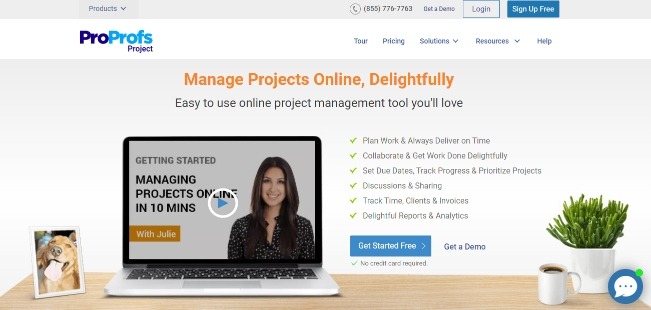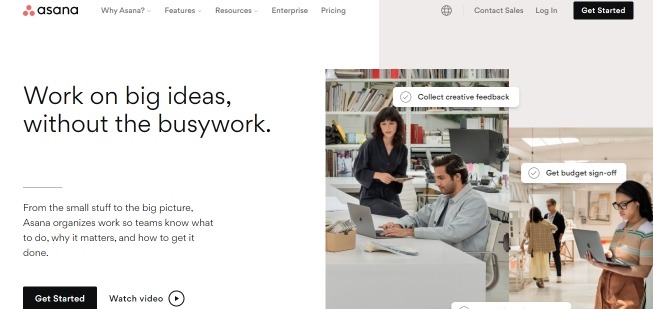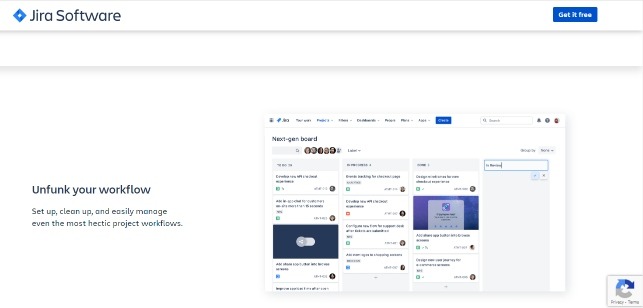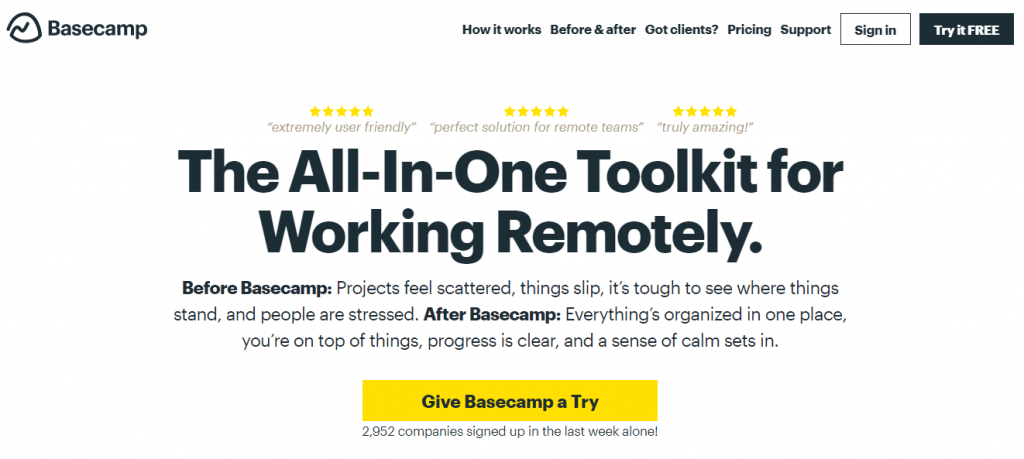Wondering how to nail web design project management as a project manager?
Managing a design project is not a walk in the park. While managing projects, you may run into situations where you face missed deadlines, poorly allocated resources, miscommunication between team members, and unclear objectives.
One of the trickiest challenges of managing web design projects is maintaining transparency throughout the project. It prevents you from bending over backward and delivering faulty projects.
Support your project’s journey from idea to its launch using proven project management methodologies, a few steps in the right direction, and a creative design project management software. This concoction is bound to eliminate inconsistencies and help you successfully deliver projects.
In this blog, we will look at what web design project management is, the methodologies, and the steps you can include for effective project management.
So, let’s get started!
What is Web Design Project Management?
It is possible that a web design project can get carried away if too much creativity is involved. But, that is no reason to falter on deadlines and exceed the budget. Also, you might notice that feedback received on work done often goes beyond what was required at first. So, is it acceptable to increase the scope of a project at the time of review?
These are some of the things that you might have wondered about when working on web designs.
But, how do you deal with such things?
With reliable web design project management!
Web design project management refers to managing the scope, timeline, resources, and budget of a project to deliver the final outcomes as per the agreed parameters. It involves controlling the framework of a project by establishing a well-analyzed workflow. It also involves keeping an eye on progress and identifying gaps, if any.
But, before we dive deeper into the steps for ideal web design project management, let’s look at the methodologies that you can incorporate to develop a project management plan.
5 Project Management Methodologies for Website Development
How often have you worked at a breakneck pace to accomplish projects only to stumble right when you least expected it? Well, maybe it’s time to reflect on the very foundation that determines how well you manage your projects.
There are some proven ways of managing projects. Without these, project management for web design projects lacks structure and transparency.
You may be comfortable with implementing a specific technique for your projects. It can also be that you deploy different techniques for handling different projects. Whatever the case, you must analyze each technique’s core characteristics and then select one depending on your needs.
1. Agile
To implement the Agile methodology for web design project management, you break down your project into manageable chunks called cycles or sprints. The cycles or sprints aim at achieving an immediate milestone by the end. For example, these cycles may aim to conduct project research, create wireframes, design the web page, or test the designed page. Each of these goals implies a project milestone that has its individual cycles with a dedicated time period.
Agile projects revolve around flexibility, collaboration, and change management. So for projects that need frequent changes and increased collaboration between team members, agile is the way to go.
Thus, with Agile, you can discuss changes with concerned stakeholders and respond to them faster. So, yes, workflows are altered, and schedules are pushed forward to address the necessary changes in real-time.
2. Kanban
Adopting the Kanban methodology in web design project management is great when you want a visual space to manage your projects. Kanban is ideal for projects that demand fewer changes during project execution.
The Kanban board consists of columns that display cards specific to a particular project stage. These columns may be ‘To be done,’ ‘In progress,’ ‘On hold,’ and ‘Completed.’ This means that all your ongoing tasks will be reflected under the ‘In progress’ column, and all your tasks that are completed will reflect under the ‘Completed’ column. Thus, with this, you can simply glance at the board and gather which tasks are at which stage of the project execution cycle.
Also, the cards are elaborate in data which means that each card displays its task name, due dates, assigned users, file attachments, and task brief if any. Thus, you simply have to click on each task to gain information related to that particular task.
As you carry on with the project, the tasks move across different stages. This specifies the flow of the tasks. For example, the card task will come under the ‘In progress’ column, when you’re working on a task. But, when you complete the task and send it for review, the task card will move to the ‘Under review’ column to reflect that the task has been completed and is currently under review. You can move a task to another column on the dashboard using a quick drag and drop action.
3. Waterfall
For projects that follow a fixed path of execution and demand no changes when in progress, Waterfall is an ideal project management methodology. In this, you set up the workflow as per the web development project plan. You assign the resources and define the due dates.
The gist is that the workflow goes exactly as planned. There are no changes incorporated at any stage of the project.
In this, tasks are planned in a sequential manner. This means that you can only start the next task after completing the previous one. If, in any case, you need to revisit a task, then you have to start the project all over again right from the start. This is akin to the direction of a waterfall, i.e., one-directional. So, yes, the waterfall methodology is not very flexible. But, it is a simple methodology to follow for projects that have a clear goal and do not require changes during their life cycle.
The best way to successfully execute this technique in web design project management is to get clear-cut requirements from your clients before starting your project. This will present a clear objective to be achieved and will enable you to plan your projects better. This will further ensure that you do not have to alter any workflow or re-do a specific task.
Read More: 10 Best Client Project Management Tips to Win More Clients
4. Scrum
Scrum is another methodology that works in cycles and sprints for web design project management.
Here you have a Scrum Master who leads the team in each sprint. Tasks are taken from the backlog and organized in short sprints of two to four weeks. Short 15-minute meetings are held daily to discuss what everyone will accomplish that day.
Once done, the Scrum Master reviews the tasks at the end of the day in what is called a ‘Sprint Review.’ Any gaps spotted are then discussed on the following day during the meeting.
This technique is apt when you’re dealing with complex projects that have rapidly-evolving requirements. With this technique, you can address requirements on a day-to-day basis, eliminating unnecessary wastage of time and effort.
Read More: Kanban Vs Scrum: What’s The Difference
5. Critical Path
Project management for website development can be tricky. Each project has a certain chain of tasks that needs to be monitored closely. If you are on the lookout for a system that enables this, then the Critical Path technique is right for you.
Using this technique, you can set the longest sequence of interdependent tasks as the critical path. This helps define the most important tasks in the workflow so that team members can direct their absolute best efforts towards these tasks, ensuring no missed deadlines and quality issues.
Indicating this path ensures that the most crucial tasks of the project workflow in web design project management are dealt with closely. It helps establish a better foundation that helps build the project on time and as expected.
Read More: Everything You Need to Know About Critical Chain Project Management
9 Effective Steps for Web Development Project Management
To successfully run a web design project management process, there are some steps that you must walk through.
So, without further ado, let’s get straight into it!
Step 1: Define Project Scope, Budget, and Timeline
Project implementation begins by creating a website project plan. This step forms the foundation of your project execution stage. What you establish in this step will determine how your project will turn out, especially when you have a clear understanding of the web design cost, as it directly influences the budget and timeline.
To start with, obtain a comprehensive brief for your project from the client.
The brief must answer the following questions:
- What are the project goals and objectives?
- What are the expected deliverables?
- What is the scope of the project?
- What is the timeline and budget of the project?
- How involved will the stakeholders be in the project activities?
- How will success be measured at the end of the project?
If you have these questions answered, then you have set yourself up for high-quality projects.
Step 2: Identify the Project Management Technique
For reliable website project management, you must identify the right project management technique that you will use to run your projects. As discussed above, these techniques may be Agile, Kanban, Waterfall, Scrum, or Critical Path.
Without a clear technique to follow, you may encounter scattered processes that do not lead to any reliable outcome. On the other hand, having a clear understanding of which technique to follow will set a better picture of how to run your projects.
Note that you can go ahead and deploy different techniques for different types of projects. The idea is to try different methodologies and observe which one complements your team’s and project’s capabilities.
Step 3: Plan and Create the Project Roadmap
Web project management becomes easier when you have a clear roadmap in place. For this, start by ascertaining all the tasks needed to deliver a project. Set the sequence in which these tasks are to be taken up. Also, set up dependencies between them and define the priority, if any. This will help establish the workflow of your project.
Next, analyze resource availability and allocate the resources. Do mention a due date for each task.
Be prepared with a risk contingency plan. This will equip you with immediate and the best measures to take when faced with challenges. To create a well-analyzed plan, rope in the stakeholders, clients, and team members. Discuss what risks they foresee with respect to project implementation. This will help you create the best-optimized plan to encounter any risks, leading to accomplished projects without a hitch.
Step 4: Adopt a Web Design Project Management Tool
Web design project management tools are known to enhance everyday accountability and visibility significantly.
Using a web design project management software, you can:
- See which team member is working on which task at any given time
- Visualize project progress and upcoming task deadlines
- Spot red flags in the workflow
- Get notifications on real-time progress
- Adjust workflows as per existing needs
- Analyze how far you are from completing your project
Adopting the right project management tool will ease your everyday management by providing a platform that offers key project metrics at your fingertips. Remember, a tool must be easy-to-use. Also, it must be affordable and scalable at the same time. These are some of the criteria that you must consider while selecting a tool for your business.
Step 5: Optimize Resources from Start to Finish
Ensure that your web development project plan allocates resources such that no resource is either underutilized or overworked.
While assigning tasks to team members, define each team member’s key roles and responsibilities. Let them in on why you think they are best suited for their assigned tasks. Highlight their key skills and show confidence in their ability to excel. This will add up to their capabilities, enabling them to outperform at their job with an increased sense of self-assurance.
Step 6: Simplify Collaboration Between Teams and Departments
Project management for website development is impossible without collaboration. Designing a web page involves deciding the content of the page, the pictures/videos that will be displayed, the message to be conveyed, the tone of the language, the font of the text, and much more. All of this is no less than an uphill climb.
Being on the same page with these factors involves walking in collaboration with each other while paying heed to everybody’s concerns and opinions.
Effective team collaboration helps run tasks smoothly and deliver projects in line with the expected outcomes. Collaboration also enables you to discuss ideas and plan projects faster. In its best form, collaboration allows team members to identify roadblocks and resolve them at the earliest.
Step 7: Send Deliverables for Client Review and Implement Changes Received
Web development project management involves incorporating feedback received from clients on work done. Designing a web page is subjective and is bound to get changes once completed. Address client advice constructively and integrate changes smoothly. There might be areas where you disagree with the client. The best way is to discuss ideas and find common ground that caters to both your opinions. Remember that the client is the ultimate owner of the project. If you fail to find common ground, then be willing to make changes as the client requires. After all, if the clients are happy, they are more likely to come back to you with further projects.
Also, take note of this step while framing your workflow. Keep some time as a buffer where you will receive feedback and make due changes without impacting the overall project timeline.
Step 8: Launch Project
This is it! It’s time to finally kick off the launch of your project.
But before you actually launch your project, there are a few steps to carry out for effective web design project management. Let’s look at these below:
- Testing: Check if the website’s fonts are uniform across the page. Ensure that pictures are optimized with alt text, and audio/videos are functioning properly. Also, check for browser compatibility and that all URLs are live.
- Go Live: In this, you make the website available for users to interact with. In professional terms, you make the code move from the test environment to the production environment.
- Conduct On-Site and Off-Site SEO activities: Here, you configure your website such that it performs well once launched. Also, check that your site is compatible across multiple devices and browsers.
Once you and your team are done with these activities, your project is now ready to launch. So, go ahead and launch your site!
Step 9: Close the Project
Lastly, don’t miss out on the most crucial step in the web design project management process. Yes, your job is not finished once the project is launched.
Go through the client brief and ensure all deliverables are accomplished. Next, bring together your team and discuss the project implementation process.
- Analyze how the project ran. Was it a smooth ride, or did you face frequent hindrances?
- Reflect on what were the challenges that you faced. How can you steer clear of these challenges in your upcoming projects?
- Were you able to deliver the project within the set timeline and budget?
- Were the clients satisfied with the final outcome of your project?
- What were the key takeaways from the project?
These are a few of the many questions that you must review along with your team.
This step will help you significantly in future projects and improve all aspects of your project execution for a high-performing project.
Read More: Project Closure Steps and Checklist: The Ultimate Guide
7 Best Web Design Project Management Software Tools
We have curated a list of the top 7 web design project management tools that you can choose from depending on your unique project and team needs.
So, let’s take a look at them.
1. ProProfs Project

ProProfs Project is an excellent project management software for web design companies. It provides a collaborative platform that lets you store and manage all your design portfolios in one place. With its powerful dashboard, you can track which tasks are pending and which ones are due at a glance.
It even allows you to prioritize and set dependencies between tasks, ensuring a crystal-clear workflow from start to finish. Also, you can set timers for approaching tasks so that nothing slips through the cracks. This ensures that projects are launched within the pre-set timeline and budget.
The tool takes the pain out of client billing by generating reliable invoices for web design project management. It tracks accurate, productive hours and offers invoices that can be automated and shared with clients instantly.
Key Features of ProProfs Project:
- Visualize progress using Gantt charts software, Kanban board, and more
- Offload recurring tasks with automation
- Share files on the go
- Receive feedback on the work done via task comments
- Set up alerts and notifications to stay up-to-date
- Adjust workflows with a drag and drop
- Organize tasks by clubbing them under various Sections
Pricing:
Starts at $39.97/month.
2. Trello

Trello is a great web design project management software. It allows you to quickly set up your projects and get started within minutes. You can start from scratch or use its ready-to-use web design template. To use the template, you simply need to tweak the task names, add users, and put in the due dates. This way, you have a ready workflow without the hassle.
The tool keeps everything organized using Trello cards and provides a well-structured roadmap for you to follow. The card displays all information related to a particular task, such as assigned members, due dates, file attachments, and task brief.
Key Features of Trello:
- View checklists to track what is done and what is pending
- Save time on tedious tasks with no-code automation
- Integrate with third-party applications
- Access on iOS and Android
- Monitor progress using Timeline, Calendar, and Map views
Pricing:
Starts at $0.
3. Asana

Asana is a simple tool for web design teams. It helps speed up web design project management by offering a user-friendly platform that helps bring designers and developers together. You can set up the project schedule and make changes as per evolving needs on the fly. You can set up the level of priority for tasks as ‘Low,’ ‘Medium,’ and ‘High.’ This enables the assigned users to pick up the important/urgent tasks first and accomplish them right at the onset.
You can view progress on projects using List, Board, and Timeline views. Also, you can gain rich insights into how your projects are progressing with ‘On Track,’ ‘At Risk,’ and ‘Off Track’ project status.
Key Features of Asana:
- Save time with automation
- Choose from 50+ ready project templates
- Customize workflows within seconds
- Integrate with your favorite third-party applications
- Set milestones and monitor projects effectively
Pricing:
Starts at $0.
4. Podio

Podio helps align people, projects, and processes so that deadlines are met and projects are achieved without any hitch. It provides an intuitive platform for web design project management by defining a clear process of project execution right from ideation to launch.
You can bring your clients, freelancers, and external stakeholders on board using custom roles and keep them in the loop of where your projects are headed. This avoids frequent check-ins and lets you focus on what’s really important.
You can visualize tasks and analyze them your way using different views. Also, its reporting capabilities give much-needed insight into KPIs without leaving the tool. Besides, you can collaborate with team members and discuss roadblocks instantly using Integrated Chat.
Key Features of Podio:
- Automate workflows to save time
- Available on Web and Mobile
- Attach files to tasks easily
- Responsive customer support
- Integrate with Google Drive, Evernote, and more
Pricing:
Starts at $0.
5. Wrike

Wrike is a versatile and flexible platform for web design project management. It helps establish clear-cut workflows, assign team members, and define due dates. This way, transparency, and accountability are maintained throughout a project’s life cycle, avoiding ineffective project handoffs. Also, you can extract actionable reports that throw light on various metrics and help steer project execution in the right direction.
The tool lets you analyze workload on a day-to-day basis to ensure no resource is either underutilized or overworked. This helps prevent wastage or burnout, allowing optimized resource capacity.
Key Features of Wrike:
- Store and manage files and docs
- Tailor project workflows within seconds
- Access interactive proofing for 30+ file formats
- Automate multi-level approvals
- Discuss ideas and roadblocks via threaded conversations
Pricing:
Starts at $0.
6. Jira

Jira is a powerful platform for web development project management that helps streamline processes and coordinate team efforts. It establishes a well-structured workflow to eliminate misaligned timelines. You can set task status as ‘Concepting,’ ‘In Review,’ ‘Ideating,’ ‘Launched,’ and much more. This helps provide clear task status that enables smooth-flowing projects. The tool also allows you to set priority levels for tasks as ‘Low,’ ‘Medium,’ and ‘Highest.’ This ensures that the team takes up the most important, urgent, or impactful tasks first.
Its agile reporting capabilities help spot gaps or areas for improvement. This helps keep the project on track by addressing roadblocks timely. Thus, you can enhance overall visibility and drive your project forward as scheduled.
Key Features of Jira:
- Get started using web design project template
- Automate workflows with ease
- Access project data via the mobile app
- Get email notifications for tasks
- Secure and compliant platform
Pricing:
Starts at $0.
7. Basecamp

Basecamp is a feature-rich platform that helps implement your web development project plan and track it in real-time. It offers a space that keeps all your team members, clients, and stakeholders on the same page with project progress. Thus, it unifies your remote team and enables sure-shot project success. The tool offers an easy-to-use interface that requires little to no learning curve.
Using the tool, you can collaborate on tasks and discuss ideas via the Message Board. You can set up notifications and be informed of approaching deadlines. Its advanced checklist enables you to check off work that’s done so that everyone has a clear understanding of what is done and what still needs to be addressed.
Key Features of Basecamp:
- Create your project dashboard using templates
- Store and manage files
- Connect with team members via Group Chat
- Stay updated with Automatic Check-ins
- Integrate seamlessly with third-party tools
Pricing:
Starts at $0.
Boost Productivity Using a Reliable Design Project Management Tool
Don’t we all dream about delivering web design projects that clients love? You can make your dream a reality by implementing the right steps supported by the right tools.
Web design project management is undeniably unpredictable. Not scheduling resources appropriately and carelessly tracking progress even for one task can end up delaying the project by days and weeks. So, incorporate the above-discussed methodologies, steps, and tools into your day-to-day project management workflows to visualize smooth-flowing tasks right from ideation to launch.
FREE. All Features. FOREVER!
Try our Forever FREE account with all premium features!





